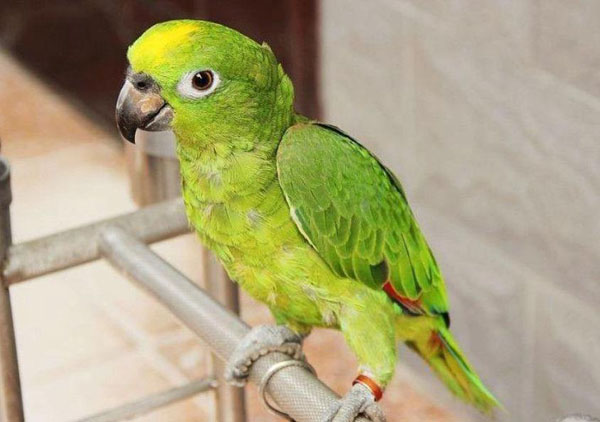Amazona ochrocephala
IUCN
LCBasic Information
Scientific classification
- name:Amazona ochrocephala
- Scientific Name:Amazona ochrocephala,Yellow-crowned Amazon,Single hat, small yellow hat, yellow crowned parrot
- Outline:Climbing birds
- Family:Psittaciformes
Vital signs
- length:31-38cm
- Weight:380-500g
- lifetime:11-16years
Feature
Yellow crown
Distribution and Habitat
Distributed in Bolivia, Brazil, Colombia, Ecuador, French Guiana, Guyana, Panama, Peru, Suriname, Trinidad and Tobago, Venezuela.
It mainly lives in lowland forests and mountainous areas with an altitude of 600-2200 meters. It also likes to live in pine forests or oak trees.
Appearance
The feathers of the Yellow-crowned Amazon Parrot are mostly green. Their eye irises are orange. The yellow is distributed on the top of their crowns, and the yellow on the top of their heads is called a "cap". There are a few red embellishments at the turning point of the wings, and the edges of the feathers are yellow-green. The primary flight feathers of their wings are purple-blue, and the secondary flight feathers are purple-blue, distributed on the feather petals and wing tips.
Although the appearance of the Yellow-crowned Amazon Parrot is not as beautiful as the Double Yellow-headed Amazon Parrot, its body size is similar, its beak is black, and the yellow feathers on the head are only distributed on a small part of the top of the head, which is easy to distinguish from the Yellow-headed Amazon Parrot.
Details
Parrots come in many different types, with different shapes and colorful feathers. Their bright feathers and huge hook-like beaks make them particularly eye-catching. These beautiful birds are facing a deteriorating living environment, with a sharp decline in populations. Some species of parrots are already or are close to extinction.
The Yellow-crowned Amazon Parrot is a very smart species, just like other yellow-headed Amazon parrots. There are 4 subspecies. Except for the native species, the other three are rare. Although the Yellow-crowned Amazon is not as beautiful as the Double Yellow-headed Amazon, it is cheaper and has a similar body size. The beak is black, and the yellow feathers on the head are only distributed on a small part of the top of the head. It is easy to distinguish from the Double Yellow-headed Amazon. It has good learning ability. Artificially bred birds are not afraid of people and interact frequently with their owners, but most of the birds seen on the market are wild birds.

They usually move in groups, sometimes up to 300, gathering in groups of hundreds to rest in the trees where they live. When the whole group gathers and flies, it is quite noisy. They also have the habit of migrating. The place of migration depends on whether there is enough food.
Diet in the wild They like figs the most, followed by berries, nuts, flowers, and young shoots on the top of trees. They also forage in crops such as banana forests or corn fields, causing agricultural losses, and farmers often shoot them. The speaking and language abilities of the Amazon Parrots are not as good as those of the Yellow-crowned Amazon Parrots or the Double-yellow-headed Amazon Parrots, but they can learn some simple speech.
The Yellow-headed Amazon Parrots in captivity are lively and noisy parrots with strong vitality. They have no great difficulty in adapting to new environments. They like to bathe and chew things. Fresh branches can be provided. They can be raised with other Amazon Parrots outside the breeding season, but it is still ideal to raise them in pairs.
Due to the indiscriminate hunting of wild birds and serious habitat destruction, the subspecies of the Amazon Parrots, the Panama Amazon Parrots, have been listed as a first-class protected bird species in the Washington Convention, while the Yellow-crowned Amazon Parrots are still listed as Appendix II bird species.








